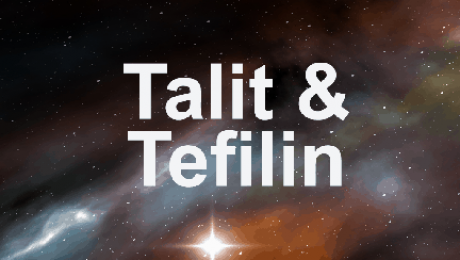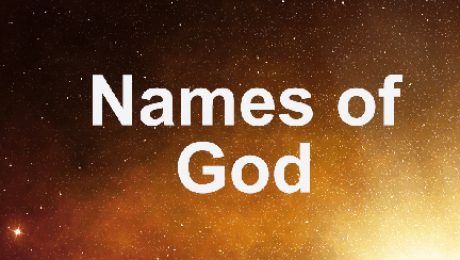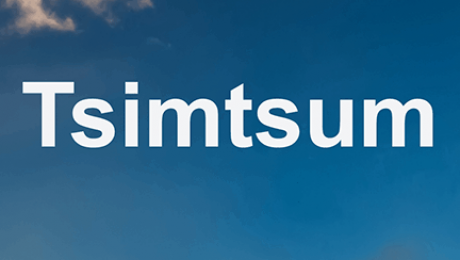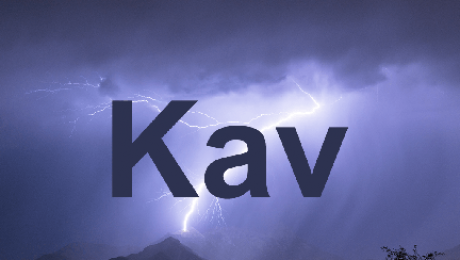Since the goal is to make the upper masculine and feminine energies unite, man has to “resemble” physically the higher masculine configuration, i.e. configuration זעיר אנפין. The Tefilin on the head represent the directive lights he receives from the higher configuration of אימה; the Tefilin on the hand represent the feminine configuration that attaches to his left side. The Talit represents his surrounding lights given also by the configuration אימה.
After configuration זעיר אנפין receives his directive lights from the higher configuration of אימה and they enter his head, they emerge from his forehead toward the outside in four different lights. The Tefilin of the head represent these lights; they comprise four compartments, each one containing a portion of text from the Torah, written on parchment.
Each one of these four lights also brings out an aspect of Levush (garment), which are the four compartments for the Parashiot.
Since the Mo’hin are directive lights that comprise ten Sephirot, the Tefilin are a representation of these ten lights:
The four compartments on the forehead are the Sephirot HBD – חכמה, בינה, דעת (which divides in two).
The two straps on the side of the head are the Sephirot חסד and גבורה.
The knot on the back is Sephira תיפארת.
The two straps that come down on the sides are the Sephirot Netsa’h and הוד: Netsa’h until the chest and הוד until the navel.
The knot that makes the י (Yud) on the Tefilin of the hand is the Sephira יסוד of configuration ז׳א. From there (the arm of ז׳א), the building of the feminine configuration begins.
The Tefilin on the arm represent the feminine configuration Ra’hel. The order of the Parashiot is the same as in the Tefilin on the head, but in only one parchment.
The three wrappings on the biceps correspond to the three first Sephirot of נוקבה. The seven wrappings on the forearm correspond to the seven lower Sephirot.
The three wrappings on the finger correspond to the NHY (נצח, הוד, and יסוד) of ז׳א, which enter inside the נוקבה to be its Mo’hin – directive lights.
Since configuration ז׳א receives two types of directive lights, one from the configuration אבה, and one from the configuration אימה, there are two types of Tefilin:
- Tefilin of אימה are called Tefilin of Rashi. They are the regular type worn by all
- Tefilin of אבה are called Tefilin of Rabenu Tam. They are worn by only a few, together or after the ones of Rashi
The difference is in the order of the writing of the four Torah portions – Parashiot.
As we can see, every element of the prayers, whether physical or spiritual, has very deep and essential meanings to give important forces and power to the one praying. It is a pity that these powerful and beautiful rituals are taken mistakenly for “folkloric recitations” in an incomprehensible language, part of “one has to do” type of thing when attending a prayer in a synagogue.
By making the effort to understand the deeper meanings of these rituals, one will discover a whole new definition and reason for his special relationship with the higher worlds and his Creator
The main names are:
- Y-H-V-H – י-ה-ו-ה
- Ein Sof – אין סוף
- Adona-y – אדנ- י
- Ahy-h – אהי-ה
- Elohi-M – אלוה-ים
Ein Sof– אין סוף
Ein Sof – The without limit or Infinite, is the most used Name for G-od in the Kabbalah. Since His light or energy cannot be measured by any definition or limiting terms, we therefore use the name “Ein Sof” (without limit) since we know and admit that G-od and the concept of limitlessness or without end is beyond our human comprehension. This name represents kindness.
Adona-y – אדנ- י
This name represents the feminine aspect of G-od; it has an aspect of rigor and is represented by the Sephira מלכות. It also represents the feminine configurations of Ra’hel and Leah. Since men’s prayers are first directed to the Sephira מלכות before they can be transmitted higher, this name also represents the closest relationship between man and his Creator.
Ahy-h – אהי-ה
This name represents the higher masculine aspect of G-od, and is represented by the Sephira כתר. It shows kindness together with the awe of G-od.
Elohi-M – אלוה-ים
One of the names of G-od, represented by the Sephira גבורה. In general, it denotes rigor in the actions of G-od.
Y-H-V-H (ה–ו–ה–י)
The primary name of G-od reveals kindness and mercy, represented by the Sephira תיפארת. All that was created has its origin in these four letters. Most of the guidance is manifested by this name and its different spellings that make new individual names.
By spelling each one of the four letters of this name differently, the numerical value of the name changes, and each one of these possibilities becomes different in its nature and actions.
| בן | BaN | 52 |
| מה | MaH | 45 |
| סג | SaG | 63 |
| עב | A”V | 72 |
The four Miluyim (spellings) are:
| ה | ו | ה | י | ||||
| עב | הי | ויו | הי | יוד | |||
| 15 | 22 | 15 | 20 | = | 72 | ||
| סג | הי | ואו | הי | יוד | |||
| 15 | 13 | 15 | 20 | = | 63 | ||
| מה | הא | ואו | הא | יוד | |||
| 6 | 13 | 6 | 20 | = | 45 | ||
| בן | הה | וו | הה | יוד | |||
| 10 | 12 | 10 | 20 | = | 52 |
Each name can also be divided and subdivided to describe even more precisely the different outcomes and manifestations of these energies:
‘A”V of ‘A”V, SaG of ‘A”V, MaH of ‘A”V …
BaN of BaN of SaG, SaG of MaH of ‘A”V etc.
The lights or forces that are clothed in these letters or their combinations emanate masculine or feminine configurations that make the guidance of the worlds.
Tsimtsum
The “Tsimtsum” is the first act of Ein Sof (Infinite) in the creation. It is the retraction of His light from a certain space and encircling it, so as to reduce its intensity and allow created beings to exist. After this contraction, a ray of His light entered this empty space and formed the first Sephirot.
By these boundaries, He revealed the concepts of rigor and limit needed by the created beings, and gave a space for all the created to exist.
‘Hallal – vacant space
After the Tsimtsum (retraction) of His light, an empty space called ‘Hallal was left in the center of this new creation – a space without His full presence. This space is circular and contains all possibilities of existence for separated entities given that they are now distanced from the intensity of His light.
Reshimu – imprint
When His light retracted to form this round space, a trace of it called Reshimu – imprint remained inside. This lower intensity light allowed a space of existence (Makom) for all the created worlds and beings.
The roots of all future existence and events are in the Reshimu. Nothing can come into existence without having its root in this imprint.
The combination of the Reshimu – imprint of the original light and the Kav – ray of His direct light, will be the origin of all future worlds and existence.
About Kabbalah
The Kabbalah is the mystical and esoteric explanation of the Torah. It teaches the unfolding of the worlds, the will of the Creator, the various ways of guidance of these worlds, the role of man in the creation, and more. No other writings explain in details; the creation of this world and the ones above it, the energies that influence its guidance, nor the final goal of everything. These writings are based on ancient Jewish texts and mostly on the Zohar.
The Kabbalah teaches us that the world is guided by an extremely complex system of forces or energies, which through their interactions provoke chain reactions that impact directly on man and the worlds. Each one of these reactions has numerous ramifications, with many details and results. It explains to us the true guidance of the world, so that we may understand the will of God. How and why He created the world, in what way He governs it, the provenance of the souls and angels, the reasons for the dualism of reward and punishment, etc.
The word Kabbalah comes from the verb Lekabel (to receive), but to receive it is first necessary to want, and to become a Keli(recipient) able to receive and contain this knowledge. The Kabbalah also demonstrates to us the importance of man, because only he, by getting closer to the Creator, can influence these incredible forces. For this, one has to elevate to a higher dimension of understanding, and start asking himself some very important questions like; “Why”, “What is the purpose of doing this act or this prayer”, “What are the outcomes of my actions” etc.
The other writings explain in the least details “how” to do, but only the Zohar and the Kabbalah explain to us the exact reasons, and effects of all our prayers and actions.
I believe that most yearn to serve at their best the Creator, but have been accustomed to execute and not seek further, or were kept away from this knowledge. It is now the time to know and learn this magnificent science, as it is written and recommended:
“From there, you shall seek the Lord your G-od, and you shall find him if you seek him with all your heart, and with all your soul.” (Devarim 4,29)
“The one, who was able to learn the secrets of the Torah (Kabbalah) and did not make an effort to understand them, will be severely judged”(Even Shelomo 85, 24). – HaGra, HaGaon Rabbi Eliyahu de Vilna
All the souls in this present world, that will make the effort to know their Creator through His secret writings (Kabbalah), will ascend higher than all the other souls that did not learn and understand, and will be first at the time of the resurrection. (Zohar, Vayeshev, 182, 2)
The man who learns Kabbalah is above all the others. (Zohar, Shemini, 42,)
The one that learns Kabbalah to understand the secrets of the Torah, and the purpose of the Mitsvot according to the Sod (secret), is called a “Son” of the Lord.(Zohar, Vayera)
And finally, the very clear obligation in the Torah “To know, now”, and not just believe:
“וידעת היום והשבת אל-לבבך כי יהו-ה הוא האלה-ים בשמים ממעל ועל-הארץ מתחת אין עוד”
“Know, today, and consider it in your heart, that the Lord is G-od in heaven above and upon the earth beneath, and there is no other.” (Devarim, 4.39)



